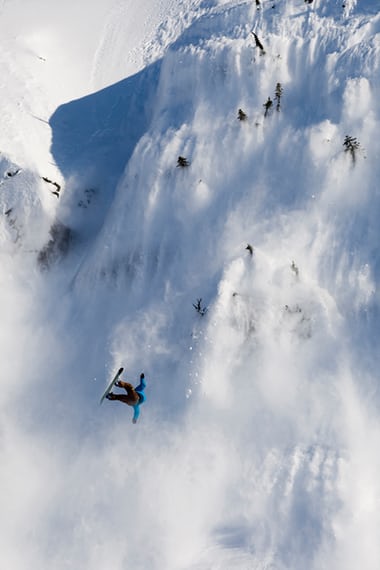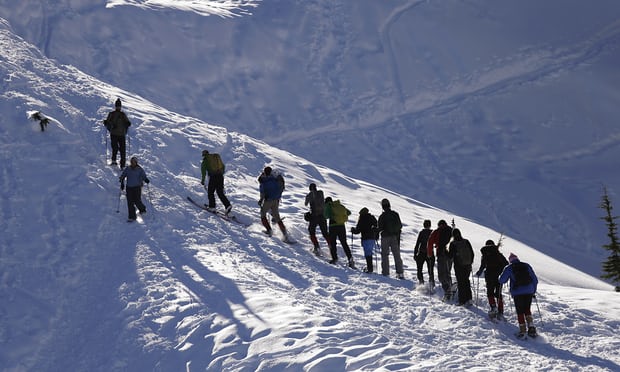|
The psychological impact of surviving a snowslide can produce post-traumatic stress disorder and a loop of shame and guilt
In October 2017, an avalanche on Montana’s Imp Peak claimed the life of 23-year-old Bozeman resident Inge Perkins, a rising star in the backcountry skiing and climbing worlds.
Her partner and well-known climber Hayden Kennedy, 27, survived the accident, but couldn’t locate Perkins, whose avalanche transceiver was turned off. He took his own life the following day. Kennedy’s father wrote in a public statement: “Hayden survived the avalanche, but not the unbearable loss of his partner in life.” While avalanches are a well-known hazard among winter mountain recreationalists, they are far more common than most people suspect. Historically there has been little public talk of their psychological impact, despite the fact that those swept up in avalanches, even non-fatal ones, reportedly deal with post-traumatic stress disorder (PTSD) and a unique loop of shame and guilt. But the tragedy of Kennedy and Perkins laid bare the magnitude of trauma left in an avalanche’s wake, and since then there’s been a kind of awakening among a reeling backcountry winter community.
The US is a paradise for backcountry skiing, snowboarding and snowmobiling, mostly taking place on tens of millions of wild acres of national and state forests in mountain ranges across the west and pockets in the north-east. A staggering 4.1 million people reported accessing the backcountry in 2016/17, up from 3.2 million only a couple years earlier.
For many backcountry enthusiasts, the allure of the backcountry is the promise of deep powder. For others it is the solitude, or fulfilling a deep-rooted need for exploration and adventure that’s increasingly hard to find in an era of Google Maps. A few might not be able to articulate it at all, except to say that spending time in the backcountry makes them feel more alive. “When you’re out there and you’re tickling the dragon, you have an appreciation for the fragility of life,” explains Christian Beckwith, founder of Alpinist magazine. “And you don’t get that without having the dragon wake up sometimes.” Backcountry snowsports require mastery of an enormous amount of information, including knowledge of snow science and how weather and terrain can affect the snow pack, and practitioners should have an eye for weaknesses that can cause slabs of snow to release naturally or as a result of human triggers. Setting off an avalanche might indicate a gap in that knowledge – a mistake of sometimes fatal proportions. An average of 27 people die in US avalanches each winter. “Embarrassment is one of the main reasons people don’t talk about their avalanche accidents,” said professional skier Elyse Saugstad, who was part of the 2012 Tunnel Creek avalanche outside Stevens Pass in central Washington state that received national attention, mostly because it involved a group of more than a dozen highly knowledgeable people in the ski and snowboard industry. The avalanche swept up Saugstad, who pulled her airbag, and three other skiers – Jim Jack, Chris Rudolph and John Brenan – who were killed in the slide. "Especially among the pros, you don’t want people thinking you made a mistake, because you’re afraid of the judgment that inevitably comes when you do. But even highly professional people in the industry make mistakes.” To channel her trauma after the accident, Saugstad threw herself into education around avalanche airbags, which were a new device at the time designed to float skiers to the top of moving slide debris. She didn’t want her friends’ deaths to be in vain and hoped people could learn from her nightmarish experience. But she said others didn’t see it that way, and leveled accusations that she was using her accident to promote a product. On top of that, she felt judgment in people sifting through the mistakes the group made that day. “I understood that people would judge what happened, so I did my best to shut out the negative criticisms. I had already lost my friends and that was bad enough. Just as long as I was honest with myself about the mistakes we made and objectively go over what I personally did wrong alongside the group, that was enough.”
Along with PTSD, anxiety and depression, shame is a common response among those caught up in avalanches, said Jennifer Feibig, a therapist practicing in Bozeman, Montana, who regularly treats people who have been involved in avalanche accidents.
“There’s a culture of analyzing all the data after an accident that takes all the humanity out of the survivors, who are already thinking ‘I killed my friend’ or going through other grief, and then descending into a shame spiral on top of that,” she said. “We need to know what happened, but we also need to make that space for the survivor to feel cared for, to feel validated that they did the best they could do, and recognize the pain that they just went through.” These emotions described by Feibig are familiar to the Helena, Montana-based couple Melissa Hornbein, a lawyer, and Aaron Gams, a nurse. On Memorial Day weekend in 2011, they took a break from busy lives to take advantage of the prime time for steep spring skiing in the mountains. The last thing Hornbein recalls is stopping at a grocery store on the way up Wyoming’s Togwotee Pass. The rest she has had to reconstruct: she and Gams climbed the final pitch of the snowy chute, the skis strapped to their packs swaying with each step kicked into the steep face. There was a split second when the top layer of snow cracked, a sight straight out of every backcountry skier’s worst nightmare. Hornbein was swept over cliffs by the avalanche and woke up in the hospital with a fractured pelvis, fractured skull and a dozen broken teeth. “Were we in an avalanche?” was the first thing she asked. That day haunted them both. The sudden sensation of falling would engulf Hornbein out of nowhere for years after the accident. Even in the safest of skiing conditions, she experienced overwhelming physical responses – heart pounding, sweating, panic – and sometimes called off the mission. “I didn’t know if the fear was completely visceral or if it was rooted in actual danger,” she said. “What that avalanche took away from me was knowing how to trust myself.” In her everyday life, she becomes anxious when she doesn’t have control, which manifested particularly vividly after the birth of her daughter, now aged one and a half. “For the first six months or so, I worried so much about this little baby and having no control over what’s going on with her health and development … I was hypervigilant, worried that if I wasn’t constantly on alert, something would happen to her.” Gams remembers everything of the accident. As the slide came to rest, he realized he was only partially buried and he scanned the debris for Melissa. He spotted her immediately, only partially buried as well – but she was unconscious, with blood trickling from her ear. With all three major ligaments torn in his knee and a separated shoulder, he pulled Melissa out of the debris and wrestled them both through the snow out to the road, where he flagged down a passing car. Despite this heroic effort, he said, “I felt like I had massively screwed up – I was the one who was pushing for going higher. I was so worried I had really messed up Melissa. I was feeling guilty right away”. Saugstad believes that bringing avalanche trauma into the open – and taking judgment out of the equation – starts with professionals telling their own stories publicly. Beckwith, the founder of Alpinist, agrees. His own accident occurred in 2013, when he was skiing Prospectors Mountain in Wyoming’s Grand Teton national park with good friend and fellow Jackson Hole resident Jared Spackman. An avalanche broke above them as they were ascending the Apocalypse Couloir, and the slide carried Spackman 1,000 vertical feet down the narrow chute, claiming his life. Beckwith was unscathed. “The bomb goes off, shattering all equilibrium,” he said, speaking quietly of the aftermath. “Eventually, the ringing in your ears begins to subside, the dust begins to settle. You realize you’re in the bottom of the crater, and you do your best to crawl out of the bomb hole, stagger to your feet and begin walking in the direction you think is right.” Beckwith sees the backcountry winter community itself as uniquely positioned to support its members. “We’ve chosen a lifestyle in which loss is inherent, so a support structure is organically part of the community. It’s a tribe, and its members understand the deal, and one another.” Cassidy Randall The Guardian
0 Comments
Leave a Reply. |
Archives
March 2022
AuthorSnow Safety Australia is a NSW based information website. Categories |
Training Courses |
Company |
|



 RSS Feed
RSS Feed